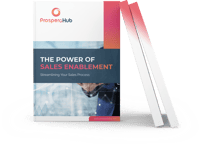Every business needs a succinct, eloquent and compelling way to “pitch” their product / service, and incorporate that pitch into all inbound and outbound methodologies. However, when it comes to the method of B2B outreach, it’s even more important to get that pitch nailed straightaway.
You only have the prospects’ attention for a few seconds before they get bored and hang up, and if you haven’t hit them with a pitch that grabs their attention and keeps their interest, then you have just wasted all that effort even getting past the gatekeeper (generally when you make a cold call into a company you will have between 8-10 seconds to get across why you are calling and why they should be interested in hearing more!).
Many companies make the mistake of confusing an Elevator Pitch with a Sales Pitch. We are not talking here about how you would present all the features and benefits of your product / solution in a sales presentation. What we need to consider is how to pique an interest and open up dialogue in a B2B environment.
This article aims to explain everything you need to know about how to craft the perfect elevator pitch. So, whether you're starting strategy from scratch or just want to brush up your current pitch, here are some tips to keep in mind! We will walk you through how to structure an Elevator Pitch and the top ‘DOs’ and DON’Ts when creating and delivering an effective elevator pitch.
So, first of all, let’s take a look at a definition of an Elevator Pitch: According to entrepreneur.com, “an elevator pitch is a conversation, or an ice breaker, that will (hopefully) lead into a deeper dialogue about the functionality, and specialty, of what you and your company can offer”. That's a great way of looking at it from a marketing perspective. It really is about how to break the ice and open up into further dialogue. It should pique your audience’s interest and make them want to hear more. A successful pitch is where the other person relaxes and says “That’s interesting. Tell me more.”
People can start off polite, but usually it really comes down to answering that pivotal question: "What can you do for me?" To get to this point, introduce yourself and address a problem early on. Explain the benefits your company can offer, which is ultimately a real solution. Personalise this person's problem into a question and give them the best solution: your company. You can achieve this by following these key steps:
Step #1: Develop a Captivating “Introductory Sentence”
- It should be how you respond to the ubiquitous question of “What does your company do?”
- Keep it brief (10 seconds)
- Put it in layman’s terms - avoid unnecessary words and industry jargon. Remember your prospect probably doesn’t operate in your industry and can be put off by terminology they don’t know.
Step #2: Elaborate with a common challenge your product / solution helps address
- Explain how your service solves the prospects problems or improves their situation.
- Think about some of your best customers. What was their major challenge? How did you help them? What benefits do they see?
Step #3: Explain the benefits your company can offer
- Demonstrate how your company can deliver specific quantifiable benefits
Step #4: Unique Differentiation
- Explain why they should buy from you and not from the competition.
So, now that we've defined how to structure an Elevator Pitch, let’s take a look at some of the DOs and DON’Ts when creating and delivering an effective elevator pitch.
Do's
- Keep it SHORT. 60 seconds is a long time to talk uninterrupted. An elevator pitch is NOT a sales pitch. Think 10 seconds, not 60! (Wonder why it’s called an elevator pitch? Because you should be able to deliver the information in the time it takes to ride an elevator)
- TAILOR your pitch to the audience. For example, the key challenges that an IT Director will face differs from an FD and likewise the benefits they will see from a solution will also differ, so it’s important to tailor this part of your pitch creation to the ‘Buyer Persona’ you are pitching to. Remember, once size does not fit all.
- Use EVERYDAY LANGUAGE. Avoid words like “synergy”, “optimise”, “efficiency”, ROI” and so on. These words SCREAM “sales pitch” and will have your panicked prospect looking for the exit signs. Try to cross out all the clichés and marketing-speak.
- Practice the DELIVERY before presenting to a prospect. The key here is to get the right mix of professionalism and energy, without seeming so excited that you're distracting or off-putting. Or worse, desperate!
DON’Ts:
- Do not confuse an elevator pitch with a sales pitch - This is probably the biggest mistake people make when creating their pitch. Remember that your pitch is a relaxed, conversational introduction that involves the listener and compels him/her to take action. That is the key. Making your pitch all about how great your company and products / services are will put prospects off. Although you do need to provide a brief intro to what your company does, remember the ‘"What can you do for me?" point we made earlier? All the prospect wants to hear is that you can provide a solution to a specific challenge they face, and back this up with a credibility statement of why they should buy from your company.
- Don't try to explain a complicated concept in your brief elevator pitch – keep it simple. If you use acronyms, techno-babble or industry specific jargon in your elevator pitch, you will have a difficult time engaging the majority of the people you speak to. Simplify complex concepts into quick, benefit-heavy chat.
- Don't forget to practice your written pitch out loud. When it looks good on paper, read it out loud and listen. Is there a natural cadence to your pitch? Are the words easy to form and speak? Are you covering all of the important points? Is your passion and energy coming through? Play around with the words until they sound conversational, friendly and natural.
First impressions matter
When you're preparing your outreach material, you need to remember: most times you'll only get one chance to make a good impression and capture your lead's attention. This is why it is crucial you do it right. To help you out, we put together a free guide with tested tips on Sales Enablement, so you can learn how to sell more effectively and efficiently. The guide aims to provide your sales team with the knowledge they need to successfully engage the buyer throughout the buying process. To download it, click on the button below.




.png?width=1940&height=1024&name=Part%20of%20Siloy%20logos%20(2).png)



.png?width=125&height=125&name=DataMigration534x534%20(1).png)
-1.png?width=125&height=125&name=Untitled%20design%20(4)-1.png)
